Are you looking for ways to effectively use screencasting in the classroom? Whether you’re new to using technology with your students or an old hat with this sort of thing, I know you’ll find this post valuable!
I’m about to talk about seven different ways I’ve implemented screencasting in my English language arts classroom to save time AND help students to be responsible for their own learning.
Student-led learning is the real deal. I first started using screencasts in my classroom four years ago when I came back from maternity leave to discover a classroom set of laptops just waiting for me to use.

From here, I quickly discovered Screencastify, a web-based platform that allowed students to record quick videos of themselves and/or what was on their screens.
I began my screencasting in the classroom journey with student-created presentations. It was basically a way to get through 25 presentations in one day. Students created a slideshow and recorded a video presentation. Then, students watched other students’ presentations, gave feedback, and reflected.
This was a simple 1:1 substitution. Live to pre-recorded presentation.
But soon I started wondering. Hmm, what if there could be more to screencasting?
Could it be cool? Cool, of course, meant student engagement + enhanced learning as a result of technology use.

Benefits of Screencasting
Screencasting allows students to take ownership of their own learning. It also gives students an authentic way to reflect on their work and to share their work with others.
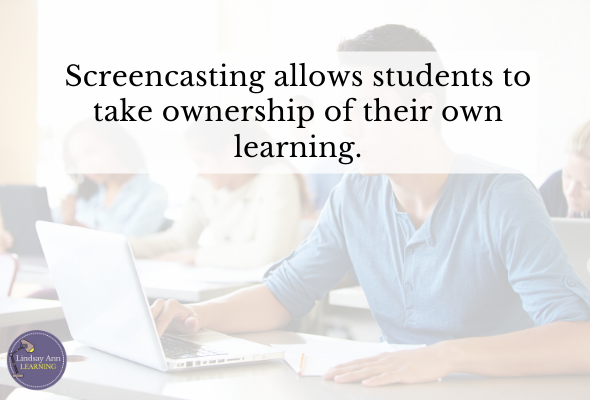
Skills-wise, screencasting allows students to hone important speaking skills, helps them to think logically as they have to structure their ideas for audience understanding, and requires other skills such as research, writing, and reading in order to prepare presentation material.
The ways I use screencasting in the classroom are diverse and go beyond simple presentations, but this is certainly a good starting point!
7 Ways to Use Screencastify or Loom or Canva
One: We’ve already talked about using student-created screencasts to present, but why not have students teach each other about a topic? Yes, yes, you can absolutely do this! Here’s where you can add some spice, though.
- Have groups of students read different articles about the same topic before creating a quick screencast about what they read. Then, do a screencast “gallery walk” in which students watch the group videos and take notes. This can be prep-work for a 15 minute debate about the topic.
- If you’re reading a novel, have groups of students create screencasts about different chapters. These screencasts would be staggered throughout the reading of the novel and used as a springboard for class discussion.
Have students develop inquiry questions, engage in research, and share their thinking with each other as speakers in a virtual conference. This would require you to set-up a web page, link to student videos and give students time to “attend” the conference. Just like a regular conference, each student would submit a brief description of his/her session presentation, along with a title and author bio. This is really fun!
Two: Have students record a literature circle discussion or small group discussion. This use of screencasting in the classroom is for the purpose of self-reflection. Students will be asked to watch the discussion together, discuss strengths and weaknesses, and submit a reflection. You can leave it at this, or you can have students select the best 4 minutes of the discussion to share with you for feedback. You can also have students record multiple discussions and reflect on growth over time.
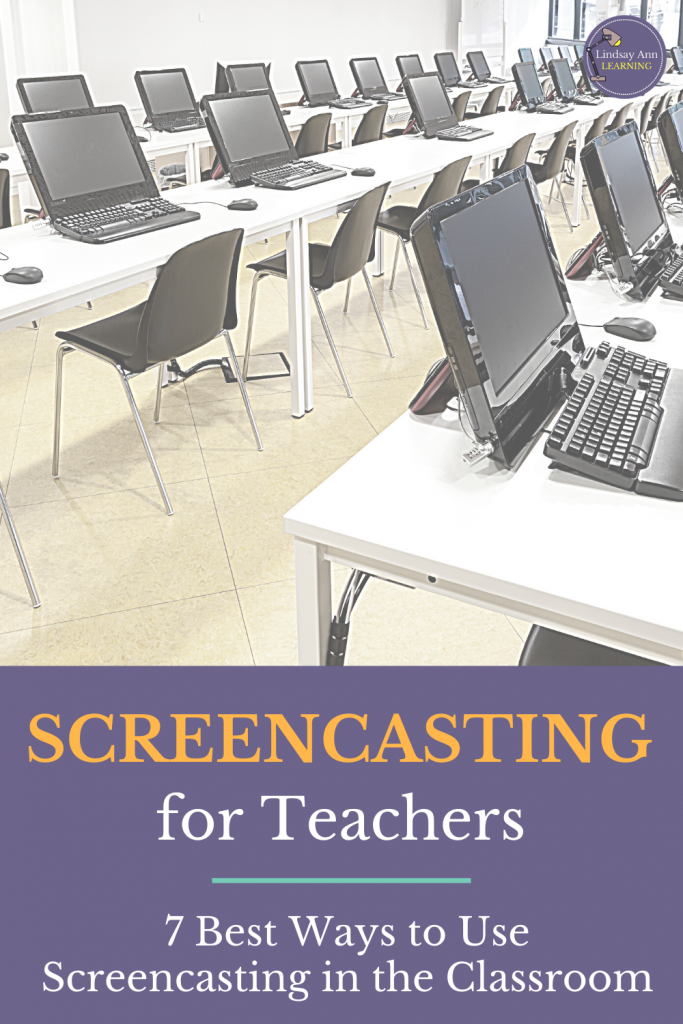
Three: As I shared about in this previous blog post, screencasting is the real MVP when it comes to student-led grading. Basically, you have students verbally talk you through how they’ve demonstrated the skills for the assessment. Or, go big picture and have students create a screencast instead of a final portfolio to talk through their three best writing pieces and how they show their growth/mastery of course skills.
Four: Have students practice nonverbals (gestures, facial expressions) by creating a lip sync video to a song. This is a fun icebreaker or team-building activity you can use at any time of the year. To do this, have students turn their webcam on, their microphone off, and their tab audio on.
Five: If you use writing or reading conferences with students in your classroom, you’ll probably wonder how to help students remember what you talked about. One way to help students remember is to record the conference via screencast so that they can re-watch. You can also have students re-watch these conferences at the end of the semester or the year to reflect on their growth over time.
Six: I talked in this recent post about how teachers can use Screencastify to create gifs, but why not have students create gifs to show their learning? This can be a great way to have students show a step-by-step process, demonstrate cause-effect or compare-contrast thinking, or demonstrate understanding of reading by creating a “flip book” a.k.a. gif of quotes, images, and/or words to represent the reading.
Seven: Give students a slideshow with 10 random pictures, one on each slide. Or, have students write a piece of micro fiction and pair it with 10 images original or found on a site such as Unsplash or Canva. Then, have students write and record a screencast story as they scroll through the slides. This reinforces creativity, writing, and speaking skills. Plus, they’re really entertaining!
I hope that this post has given you some new ideas for screencasting in the classroom. Drop me a message below letting me know which one you’re most excited about!



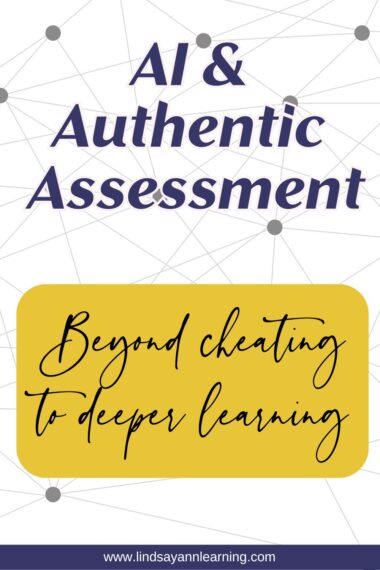
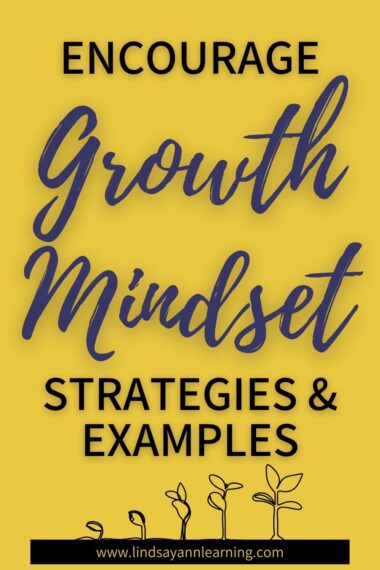
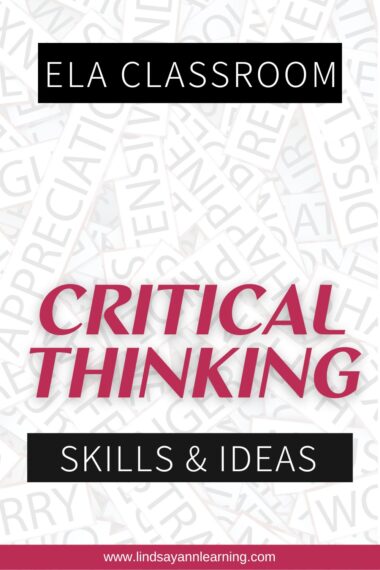









 Guaranteed No Stress End of School Year Activities
Guaranteed No Stress End of School Year Activities
You have some interesting ideas, thank you for sharing your wisdom. Please rethink you use of “Thug Notes” however, I can’t imagine calling them that ever, but especially now.
Hi Heather, Thank you for your comment. I understand your perspective and have taken that bit out of the post due to the fact that it may be misconstrued. However, please know that my intent was not to have students call their screencasts Thug Notes or to imitate so closely, just to take the spirit of that idea, to give an engaging book talk to demonstrate knowledge of the chapters. This is a tough one because the title of Thug Notes is one that the author gave to his own YouTube series. I believe that mentioning this as an example (would never show in class, BTW) might be an interesting conversation starter for students about the appropriateness of it and whether or not the author may be reinforcing racial stereotypes or if his intent is satire. The question of to what extent it is appropriate for someone who is a part of a stereotypical group to take a stereotype and exaggerate it while debunking it at the same time is interesting to me. Best Regards, L